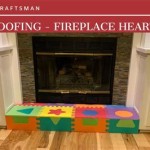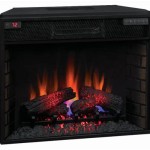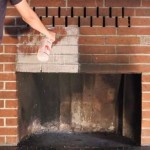Fireplace Back Panels: Enhancing Aesthetics and Functionality
Fireplace back panels, also known as firebacks or fireplace liners, are essential components of traditional and modern fireplaces. They serve both decorative and functional purposes, contributing significantly to the overall appeal and efficiency of a fireplace. A well-chosen back panel can transform a simple fireplace into a focal point, while simultaneously protecting the fireplace structure and improving heat reflection.
The primary function of a fireplace back panel is to protect the rear wall of the firebox from the intense heat of the fire. Without a back panel, prolonged exposure to high temperatures can lead to cracking, crumbling, and eventual structural damage to the fireplace masonry. By absorbing and reflecting heat, the back panel significantly reduces the direct thermal stress on the fireplace's back wall, extending its lifespan and reducing the need for costly repairs. Additionally, some materials used in back panels, such as cast iron, offer excellent thermal mass, effectively storing heat and radiating it back into the room even after the fire has died down.
Beyond protection, fireplace back panels offer a significant aesthetic enhancement. They are available in an array of materials, designs, and finishes, allowing homeowners to customize their fireplace to match their personal style and the overall décor of their home. From ornate Victorian-era reproductions to sleek, contemporary panels, there is a back panel to suit virtually any taste and architectural style. The visual impact of a well-chosen back panel can be transformative, elevating the entire ambiance of the room.
The materials used in the construction of fireplace back panels vary widely, each offering different properties and aesthetic qualities. Common materials include cast iron, steel, ceramic tiles, firebrick and decorative stone. The choice of material often depends on the desired aesthetic, the level of protection required, and the overall budget.
Material Options and Their Characteristics
Cast iron back panels are a popular choice due to their durability, heat retention capabilities, and classic aesthetic. They are typically adorned with intricate designs, ranging from historical motifs to nature-inspired patterns. Cast iron is an excellent conductor of heat, allowing it to absorb and radiate warmth efficiently. It is also highly resistant to warping and cracking under high temperatures, making it a reliable and long-lasting option. However, cast iron back panels can be heavier than other materials and might require professional installation.
Steel back panels offer a modern and streamlined aesthetic, often favored in contemporary homes. They are typically less ornate than cast iron panels, featuring clean lines and minimalist designs. Steel is a strong and durable material, capable of withstanding high temperatures. While it does not retain heat as effectively as cast iron, it is a more affordable option and is relatively easy to install.
Ceramic tile back panels provide a wide range of design possibilities, allowing for endless customization. Tiles can be chosen in various colors, patterns, and textures to create a unique and personalized fireplace. Ceramic tiles are also easy to clean and maintain, making them a practical choice for busy households. However, it is crucial to use tiles specifically designed for fireplace applications, as standard ceramic tiles might crack under extreme heat. The grout lines between the tiles may also require periodic maintenance to prevent cracking and crumbling.
Firebrick is a refractory material specifically designed to withstand extremely high temperatures. While it might not offer the same aesthetic appeal as other materials, firebrick is an excellent choice for maximizing heat retention and protecting the fireplace structure. Firebrick back panels are often used in conjunction with other decorative materials to provide both protection and visual appeal. They are also commonly used to repair damaged fireplace walls, providing a robust and fire-resistant surface.
Decorative stone back panels can add a touch of elegance and sophistication to a fireplace. Stone options include marble, granite, slate, and limestone, each offering unique textures and color variations. Stone is a durable and heat-resistant material, capable of withstanding high temperatures without cracking or warping. However, stone back panels can be expensive and might require professional installation due to their weight and complexity. The porous nature of some stones might also require sealing to prevent staining and damage from soot and ash.
Installation Considerations
The installation of a fireplace back panel is a crucial step in ensuring its proper function and longevity. Depending on the type of back panel and the existing fireplace structure, installation can range from a simple DIY project to a more complex undertaking requiring professional expertise.
Before installing a back panel, it is essential to thoroughly clean the firebox, removing any loose debris, soot, and ash. This will ensure a clean and stable surface for the back panel to rest against. For masonry fireplaces, it might be necessary to repair any cracks or crumbling areas before installing the back panel.
For cast iron and steel back panels, installation typically involves securing the panel to the back wall of the firebox using screws or bolts. It is crucial to use heat-resistant fasteners to prevent them from weakening or failing under high temperatures. Some back panels might come with pre-drilled holes for easy installation, while others might require drilling pilot holes into the masonry.
Ceramic tile back panels are typically installed using a heat-resistant adhesive mortar. The tiles are carefully applied to the back wall, ensuring proper spacing and alignment. Once the mortar has dried, the grout lines are filled with a heat-resistant grout to create a seamless and durable surface. It is important to follow the manufacturer's instructions carefully when installing ceramic tile back panels to ensure a successful and long-lasting installation.
Firebrick back panels are often installed using a refractory mortar. The firebricks are carefully arranged to create a solid and fire-resistant barrier. It is crucial to use a high-quality refractory mortar that can withstand the extreme temperatures of a fireplace. The mortar joints should be kept as thin as possible to maximize the thermal efficiency of the firebrick.
For decorative stone back panels, installation typically involves using a specialized adhesive mortar designed for stone applications. The stones are carefully positioned and secured to the back wall, ensuring proper alignment and stability. Due to the weight and complexity of stone installation, it is often recommended to hire a professional mason to ensure a safe and aesthetically pleasing result.
Maintenance and Care
Regular maintenance and care are essential for maintaining the appearance and functionality of a fireplace back panel. The frequency and type of maintenance will depend on the material of the back panel and the frequency of fireplace use.
For all types of back panels, it is important to regularly remove soot and ash buildup. This can be done using a brush or vacuum cleaner. Soot and ash can stain the back panel over time, so it is best to remove them as soon as possible. For stubborn stains, a mild detergent and water solution can be used, followed by thorough rinsing and drying.
Cast iron back panels might require occasional seasoning to prevent rust. Seasoning involves applying a thin layer of oil to the surface of the cast iron and heating it in the fireplace. This creates a protective layer that prevents rust and corrosion. It is important to use a food-grade oil, such as vegetable oil or canola oil, for seasoning cast iron back panels.
Ceramic tile back panels should be inspected regularly for cracks or crumbling grout. Any damaged grout should be repaired promptly to prevent moisture from seeping behind the tiles. The tiles can be cleaned with a mild detergent and water solution. Avoid using abrasive cleaners, as they can scratch the surface of the tiles.
Decorative stone back panels might require periodic sealing to prevent staining and damage from soot and ash. The type of sealant will depend on the type of stone used. It is important to follow the manufacturer's instructions carefully when applying sealant to stone back panels.
Proper use of the fireplace is also crucial for maintaining the back panel. Avoid burning excessively large fires, as this can generate excessive heat and potentially damage the back panel. Ensure adequate ventilation in the room to prevent smoke buildup and carbon monoxide poisoning. Regular chimney cleaning is also essential for preventing chimney fires and ensuring proper fireplace operation.
By understanding the function, materials, installation, and maintenance of fireplace back panels, homeowners can make informed decisions to enhance the aesthetics, safety, and efficiency of their fireplaces.

Marble Effect Hpl Laminate Fireplace Back Panel Hearth Sets Furniture For The Home

What Is A Fireplace Back Panel Universe

Fireplace Back Panels Granite Slate And Stone Specialist Supplier To Manchester Grate Accessories

Marble Effect Hpl Laminate Fireplace Back Panel Hearth Sets Furniture For The Home

White Black Grey Cream Marble Effect Hpl Laminate Fireplace Back Panel Hearth

Marfil Micro Marble Hearth And Back Panel Set Direct Fireplaces

Fireplace Back Panel Ideas Tips 2024 Checkatrade

Slate Back Panel And Hearth For Fireplace Eazyclad Stone Cladding

Slabbed Polished Granite Set For Solid Fuel Inset Stoves Designer Fireplaces

Focal Point Contemporary Slate Effect Back Panel Hearth W 1250mm D 380mm Diy At B Q
Related Posts








